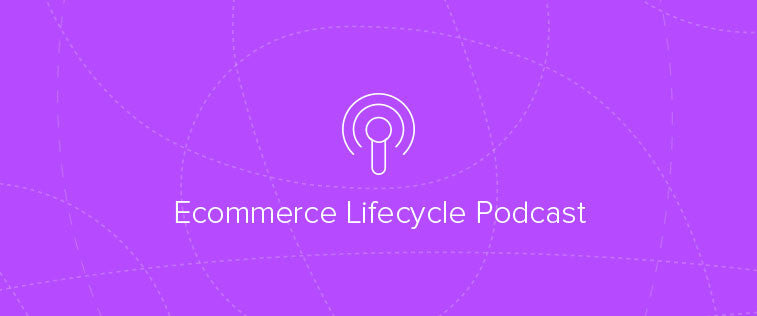When beginning a new project for a client, it's important to focus on their overall ecommerce strategy before really getting into the design and development of the website itself. I teamed up with Ross Beyeler, the founder of Growth Spark — a Boston-based ecommerce consulting and design agency — to walk through each step involved in providing a holistic strategy for your client.
Ross developed a framework called the Ecommerce Customer Lifecycle to help better define a client's ecommerce strategy. The best way to look at it is as a series of questions to prime some deeper thinking and research. These questions explore five key areas, each of which we've covered in a podcast:
- Acquisition: How do you get people to your website?
- Conversion: How do you get them buy once they're there?
- Fulfillment: How do you get them the product?
- Retention: How do you get them to come back and buy again?
- Analytics: How do you measure all of that activity to make sure it's profitable?
This is our fifth and final episode of the Ecommerce Lifecycle Podcast. In it, we focus on the fifth key area and discuss all things measurement. We ask how we can use analytics and data to ensure that all of our ecommerce customer lifecycle activities are profitable.
Want an overview of the content from previous podcasts? Read to the bottom of this post for a full recap.
The four key areas of measurement
After acquiring traffic, converting them into customers, delivering the products or services, and working on a long-term relationship, how do you measure the success of the relationship?
Ross has broken down measurement into four key areas.
Analytics
Analytics serve as the lifeblood of your measurement activities. It’s the raw data sourced around your customers behavior as it relates to your ecommerce website. Data might include traffic sources, time spent on website, and content engagement.
Conversion optimization
Conversion optimization is the practice of employing on-going testing methods to help improve the effectiveness of your website. These testing methods include A/B testing, where you isolate a specific change to your website and measure the impact it has on a metric such as conversion rate or average order volume. Other methods might include usability testing.
The Customer Hub
The Customer Hub is the concept of creating a centralized 'profile' of your customers, built around aggregated data from the various platforms with which they interact such as email, support, shopping cart, and social media.
Performance metrics
Performance metrics are the numbers by which you measure your success as an ecommerce company and might include total revenue, net profit, and average order volume. In the Ecommerce Customer Lifecycle, Ross prefers to look at one key metric: gross profit per visitor (GP/V).
GP/V is a metric that ecommerce companies can use to understand the profitability of each visitor and visitor segment (i.e. geographic target, demographic target, and specific traffic source) which in turn can be utilized to calculate the ‘drivers’ behind the profitability of their business.
Listen in
To recap
- In Part I of “The Ecommerce Customer Lifecycle,” Ross and I focused our attention on the “acquisition” phase and asked the question: “How can we get potential customers to visit our sites?” Tactics discussed included social media, paid advertising, influencer marketing, among others.
- In Part II, we moved on to discuss “conversion” which focuses on getting the visitors of your website to actually purchase products. This step is where user experience, design, branding, content and your on-site strategy are crucial.
- In Part III, we turned our attention to the often overlooked topic of fulfillment. Whilst on first glance you might think that it's a simple case of putting a product in a box and adding a postage label, there are plenty of other factors to consider — many of which will help your clients showcase themselves and their brand values.
- In Part IV, we focused on retention. This includes ways to get customers to keep coming back and purchasing products. Having long-term relationships with customers who have already purchased from you can be highly profitable as your "cost per acquisition" reduces.
- In Part V, we discussed all things measurement and asked how to use analytics and data to ensure that all ecommerce customer lifecycle activities are profitable.
You might also like: 15 Unmissable Web Design Podcasts









